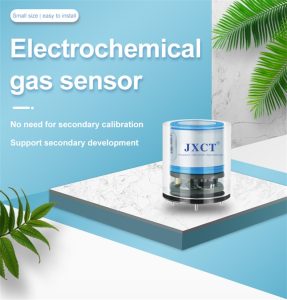Air pollution is a pervasive environmental issue that poses significant risks to human health and the planet. As the world continues to grapple with the adverse effects of air pollution, advancing technologies are crucial in controlling and mitigating its impact. Gas sensor technology has emerged as a powerful tool in monitoring air quality and facilitating effective air pollution control measures. This article explores the role of gas sensor technology in advancing air pollution control and its applications across various sectors.

Understanding Gas Sensor Technology:
Gas sensors are sophisticated devices that detect and measure the concentration of specific gases in the air. They utilize different sensing techniques, such as electrochemical, semiconductor, or optical methods, to accurately identify and quantify target gases. These sensors can be calibrated to detect a wide range of pollutants, including carbon monoxide, nitrogen dioxide, sulfur dioxide, ozone, and volatile organic compounds (VOCs).
Real-time Air Quality Monitoring:
Gas sensor technology plays a pivotal role in real-time air quality monitoring by continuously measuring gas concentrations. Traditional methods involve periodic sampling and laboratory analysis, which may result in delayed information. Gas sensors provide immediate and accurate data on pollutant levels, enabling timely interventions and decision-making for air pollution control strategies.
Source Identification and Emission Tracking:
Identifying pollution sources is crucial in developing effective air pollution control measures. Gas sensors aid in source identification by detecting and quantifying specific gases emitted by industries, vehicles, or other pollution sources. This information enables authorities to pinpoint the major contributors to air pollution and implement targeted strategies for emission reduction.
Intelligent Air Pollution Control Systems:
Gas sensor technology integrates with intelligent air pollution control systems, revolutionizing air quality management. These systems utilize data from gas sensors, along with meteorological and other environmental parameters, to develop predictive models and optimize pollution control technologies. By continuously monitoring gas concentrations, these systems adjust pollution control mechanisms in real-time for optimal efficiency.
Improving Industrial Emissions Management:
Industries are significant contributors to air pollution, releasing pollutants during manufacturing processes. Gas sensors aid in monitoring industrial emissions and ensuring compliance with environmental regulations. By detecting and measuring gases such as sulfur dioxide, nitrogen oxides, or volatile organic compounds, these sensors help industries implement effective control measures to reduce emissions and minimize their impact on air quality.
Enhancing Indoor Air Quality:
Indoor air pollution is a growing concern, as people spend a significant amount of time indoors. Gas sensor technology plays a crucial role in monitoring indoor air quality and identifying potential sources of contamination, such as cooking stoves, building materials, or cleaning products. By detecting elevated levels of pollutants like carbon monoxide, formaldehyde, or particulate matter, gas sensors enable timely interventions and promote healthier indoor environments.
Smart Transportation Systems:
Gas sensors integrated into smart transportation systems contribute to air pollution control efforts. These sensors monitor vehicle emissions in real-time, detecting pollutants such as carbon monoxide, nitrogen oxides, and particulate matter. By providing accurate and immediate data, gas sensors facilitate the optimization of traffic management, emission reduction strategies, and the development of cleaner transportation technologies.
Citizen Empowerment and Awareness:
Gas sensor technology empowers citizens to actively participate in air pollution control efforts. Portable gas sensors allow individuals to monitor air quality in their immediate surroundings, providing valuable data and raising awareness about pollution hotspots. This information enables citizens to take personal actions to reduce exposure to pollutants and advocate for necessary policy changes.

Conclusion:
Gas sensor technology is at the forefront of advancing air pollution control strategies. These sophisticated sensors provide real-time and accurate data on gas concentrations, enabling effective monitoring, source identification, and emission reduction efforts. From industrial emissions management to enhancing indoor air quality and smart transportation systems, gas sensors are invaluable tools in our journey towards cleaner and healthier air. By harnessing the power of gas sensor technology, we can make significant strides in controlling air pollution, protecting human health, and preserving the environment for future generations.
 : +86 155 8830 2704
: +86 155 8830 2704 : jxdziot@gmail.com
: jxdziot@gmail.com
